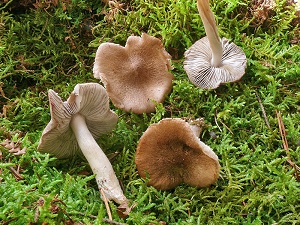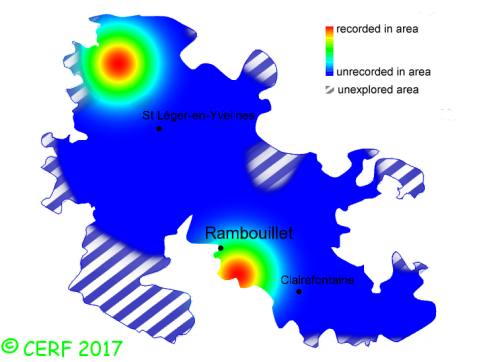| Tricholoma myomyces (Pers.:Fr.) Lange |
|
|
|
|
|
|
The cap is mouse-grey to grey-brown, convex then expanded, with or without broad central umbo; its margin is smooth. The cap surface is woolly, with radiating fibrils, downy-felty, not viscid nor sticky. The stem is white, silky-fibrillose, with some cortina remnants. The flesh is white to grey, unchanging; its taste is faint, pleasant; the odour is faint, slightly mealy; its texture is fibrous. The gills are white, emarginate, fairly crowded . The spore print is white. This species is mycorrhizal. It grows on the ground, in coniferous woods, or along these, in the grass, sometimes also with broad leaved trees, on a rather calcareous soil, with pine and fir.
Distinctive features : fibrillose-woolly mouse grey cap; white, silky-fibrillose stem, with cortina remnants; white gills; white flesh with a faint odour; with conifers Tricholoma myomyces is rare and confined in the forest of Rambouillet, and is occasional, more generally speaking . | ||
|
page updated on 14/01/18

